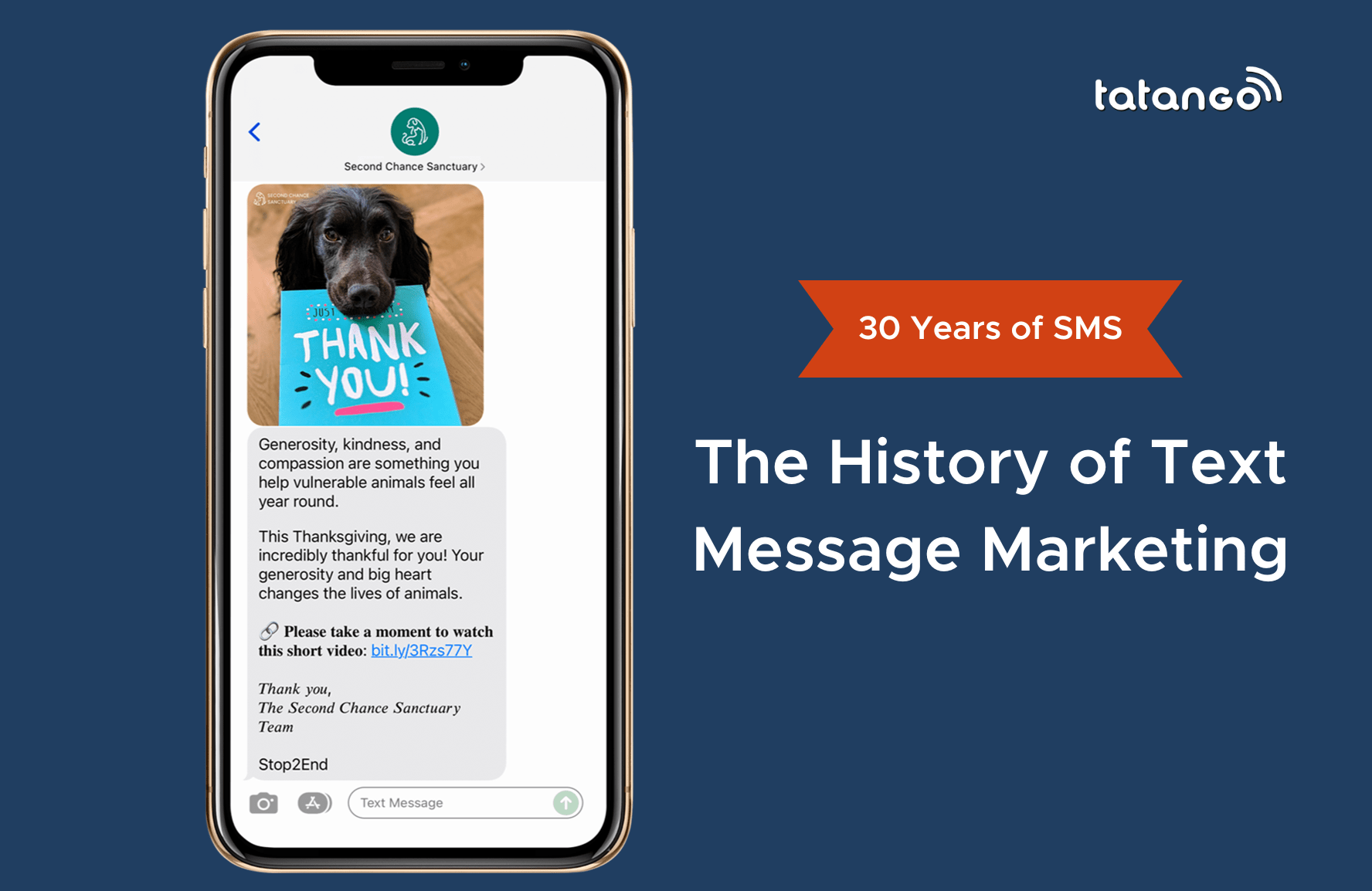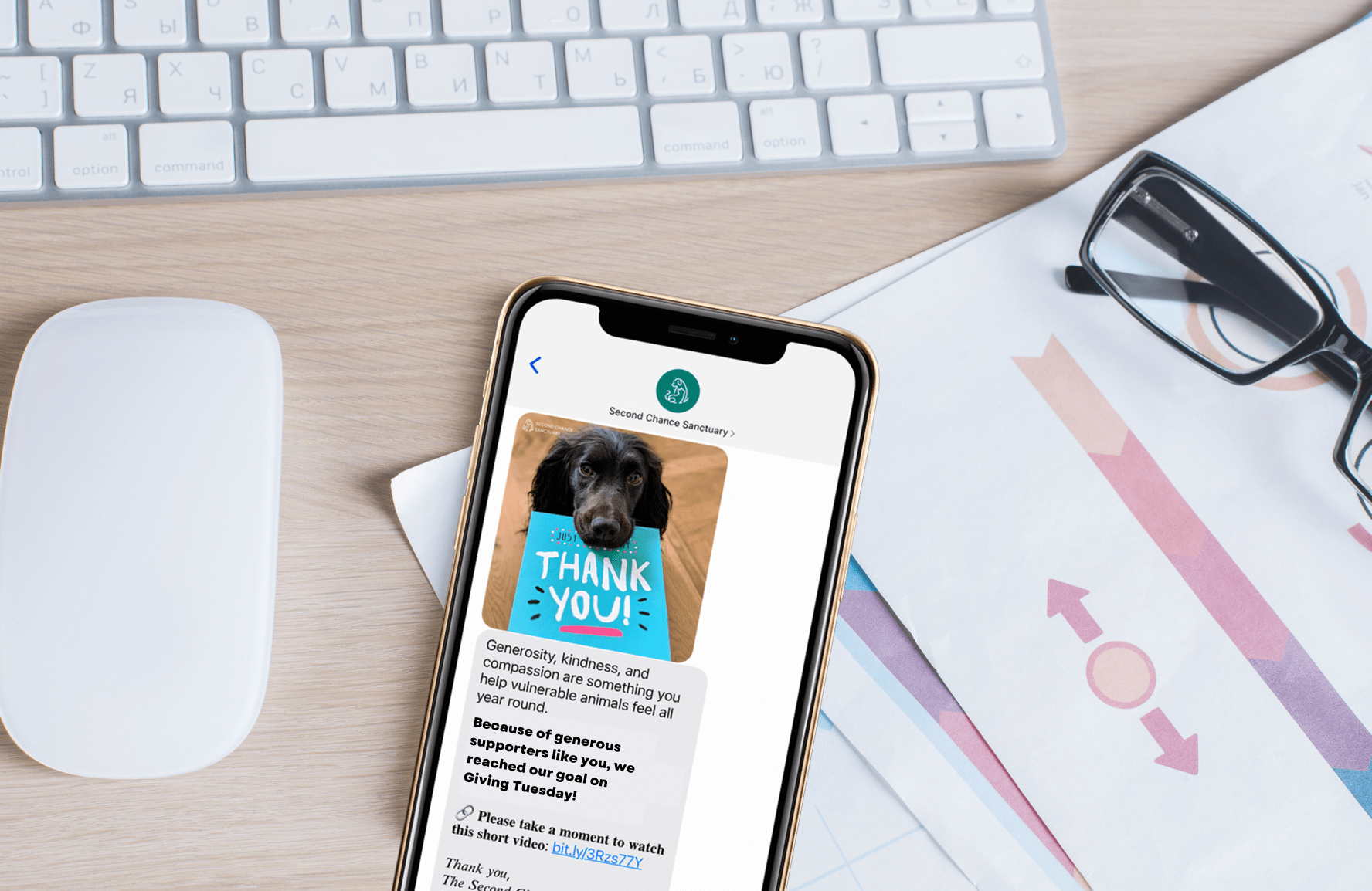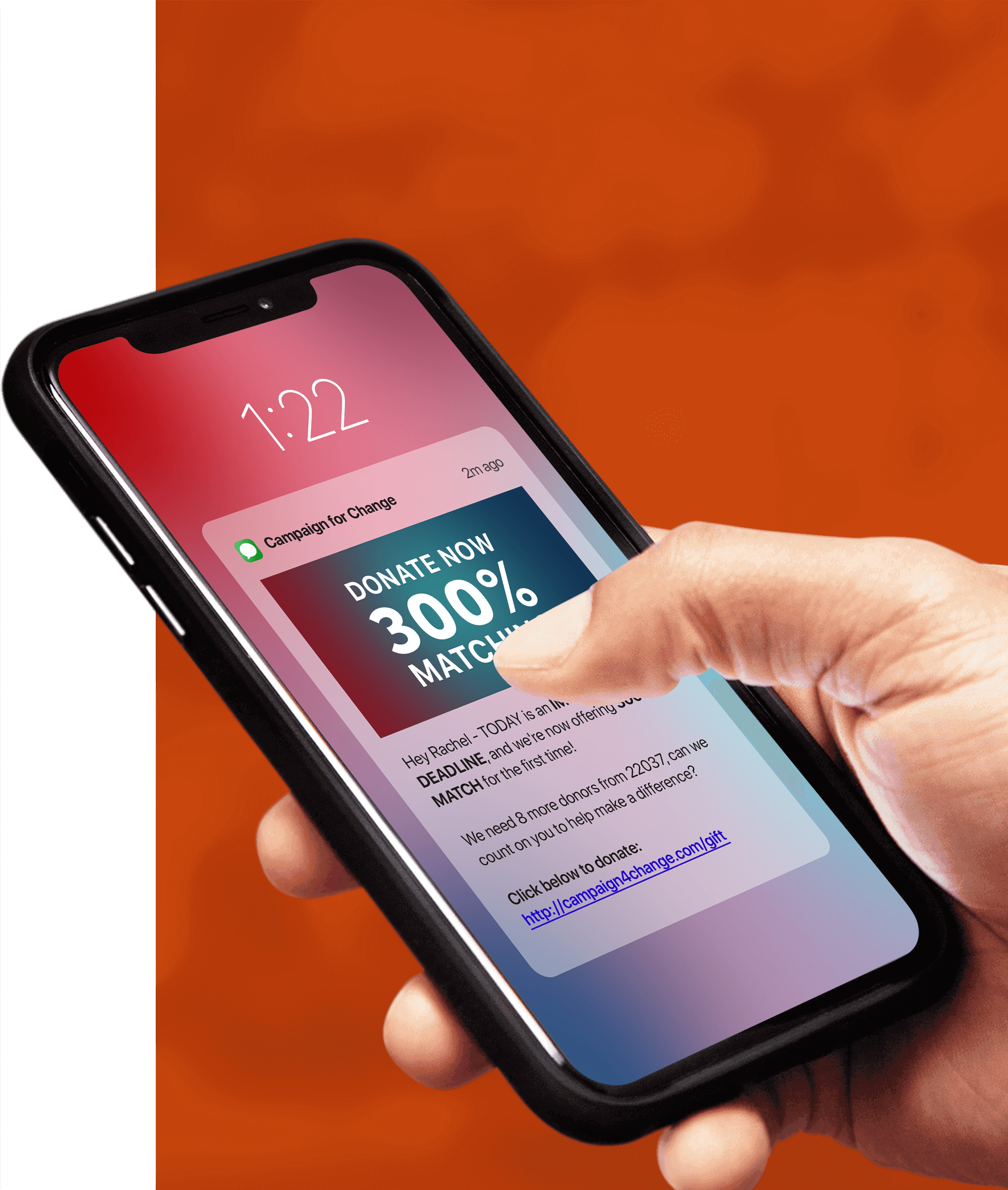
SMS turns 30 years old on December 3, 2022. From the first SMS text to the QWERTY keyboard on a flip phone to the Blackberry, and now to sending text messages that contain emojis, GIFS, movies and audio, SMS has completely revolutionized the way we communicate. Most importantly, nonprofit and political organizations using SMS have been able to engage their constituents and gain support to advance their mission in ways like never before.
Text message marketing has come along way since its beginning, with consumers now opening 99% of text messages they receive from enterprise brands—and 90% of those messages within just minutes. In this blog post, you’ll learn about the history of text messaging, including how text message marketing started and all the changes it’s gone through to become the mobile marketing channel it is today.
Let’s take a look back at 30 years of text messaging.
What is SMS Messaging?
First things first: before we get into the beginning of text message marketing, let’s review the basics of SMS, another term used to describe text message marketing.
An SMS message (short message service) is a text message that people send to mobile devices. These messages can only contain up to 160 characters and can be made up of text, links, clickable phone numbers, and emojis. However, there are other text messages-known as MMS (multimedia messaging services)–which can include additional media content like images, gifs, videos, and audio files, and have a character limit of 5,000.
SMS messages and MMS messages are commonly used by brands to create marketing campaigns to target customers. Brands also use SMS marketing and MMS marketing as a communication tool to send notifications to their customers, such as order status, delivery notifications, and store updates.
The First Text Message Ever Sent
Can you believe it’s been almost 30 years since texting started? That’s right: it all began on December 3rd, 1992, when a 22-year-old British engineer named Neil Papworth, the former software developer at Sema Group Telecoms, sent the first SMS text to Vodafone Director Richard Jarvis. The first text message was sent from Papworth’s computer to his friend’s cell phone at a party across town, and consisted of 15 characters which spelled the words “Merry Christmas.” Jarvis wasn’t able to answer back and have a text conversation with Neil since his brick-sized Orbitel 901 mobile phone didn’t have a qwerty keyboard yet.
“I had no idea just how popular texting would become, and that this would give rise to emojis and messaging apps used by millions. I only recently told my children that I sent that first text message,” Papworth once said. “With hindsight, it’s clear to see that the Christmas message I sent was a pivotal moment in mobile history.”
Neil Papworth was born and raised in Reading, United Kingdom. At the age of 16, he left school to complete an Ordinary National Diploma (OND) in computer studies. In his spare time, Papworth became an expert in dial-up bulletin board systems, the forefather of social media. In April 1991, after finishing a Higher National Diploma (HND) in Computer Sciences, Papworth joined Sema Telecom’s graduate program. By this year, the idea of SMS text messaging was coming into existence; some devices could receive messages, but still, none could send texts.
At the time, Papworth had been working to create a Short Messaging Service (SMS) for his client, Vodafone. Sema Telecoms was hired by Vodafone to create a text messaging system. The goal was to let secretaries send text messages to directors and technicians, instead of phone calls. Little did Papworth know what his invention would become! This successful creation of text messaging for this use case brought about the introduction of texting in other industries.
By 1992, mobile phones could receive and send SMS text messages. These first text messages were free and could only be sent between people on the same mobile network, such as AT&T, Verizon, or T-Mobile.
In 1993, one year later, Nokia presented a new SMS feature–a ‘beep’ which meant you had an incoming message, and in 1994, IBM launched “Simon”, a mobile phone with a touchscreen, which could be considered the first “smartphone.”
It wasn’t until 1995 that Papworth himself was able to afford his first mobile phone. After setting up Vodafone’s SMS texting service, he established texting systems around the world, from Toronto and Seattle to Sydney and Singapore. That same year, the Tegic system, also known as “T9” arrived with its predictive text technology, which “predicted” texting based on what people were typing. The world would never be the same!
Texting: A Modern Form of Mobile Communication
Fast forward a few years, and in 1997, Nokia introduced the Nokia 9000i Communicator-the first mobile phone that came with a qwerty keyboard. Since text messaging had a 160-character limit, early adopters invented their own text language-also referred to as text speak or ‘txt spk’. This contained terms like LOL (laughing out loud) and ROFL (rolling on the floor laughing) as well as emoticons, which are symbols made from keyboard characters such as :’-) and :-* to show emotions. Later on, this would inspire the invention of the first official emojis.
In 1999, seven years after Papworth’s first text message, affordable phone contracts and smaller phones were introduced, and texting could be exchanged between different networks, which increased text messaging’s popularity more than ever before.
By 2002, more than 250 billion SMS messages were sent all around the world.
Around 2003, 5 and 6 digit short codes for use with SMS marketing were introduced. With this, major brands started to launch huge SMS marketing campaigns, such as the Pontiac G6 giveaway and Nike’s Times Square design campaign.
Four years later, in 2007, Apple launched the iPhone in the United States. This revolutionary mobile phone included a virtual keyboard, which became the standard design pattern for modern smartphones. In this same year, the average of text messaging per month exceeded the monthly phone calls made, and the number of active text message users reached 2.4 billion messages worldwide, becoming the main form of mobile communication.
In 2010, the Cambridge Dictionary officially added “text” as a verb, meaning to send a text message.
One year later, in 2011, Apple’s iMessage was introduced-an instant messaging service that works exclusively on Apple platforms: macOS, iOS, iPadOS, and watchOS.
In the subsequent years, many smartphone owners started using other instant messaging apps such as Facebook Messenger, WhatsApp and iMessage, instead of regular texting apps. But still, SMS messaging is the most widely used device feature–around 5 billion people can send and receive SMS messages, and more than 200,000 SMS texts are sent every second.
Elizabeth Bruton, the curator of technology and engineering at the Science Museum in London, described texting as “an important development in the history of mobile telephones.” Burton said, “For the very first time, we have mobile phones that are more than just literal mobile phones, moving beyond voice communications to a new application of the mobile spectrum—to sending, literally, text messages.” As every smartphone user knows, SMS text messaging is easy to use, and there is no need for Wi-Fi or data connection. This makes text messaging one of the most popular, widely used ways to get in touch with friends, family, and brands.
Occasionally, we are asked whether or not you can send a text to a landline number as opposed to a mobile phone. Those of you who are younger may be wondering: what is a landline number? A landline number is a phone number that relies on physical wires to enable calls. Mobile phones, smartphones, and cell phones use radio waves to transfer voice calls and texts, so they aren’t considered landlines. There is no land wire involved.
Today, many people have mobile phones, and landline phones are becoming a relic of the past in many parts of the country and world. For many people, their mobile phone number or cell phone number is the only number they use. For text message marketing, brands typically get their own number—a 5 to 6-digit number referred to as a short code as mentioned above—that they can use to text customers. Short codes are easier for consumers to recall, and are easier to text into versus a 10-digit phone number. Read more about short codes.
How Nonprofits Use Text Fundraising Today
Today, brands use SMS (commonly called mobile fundraising or text fundraising) to regularly engage with their constituents. By offering customers incentives to opt in to their SMS marketing campaigns, nonprofits and political organizations grow their subscriber lists and gain support for their mission by engaging constituents and receiving donations. Below are a few examples of how nonprofit organizations use mobile fundraising today. Check out additional resources and inspiration here.

Get Started Text Messaging Today
Tatango has been the text message marketing industry leader for the past 13 years, specializing in SMS marketing, RCS marketing, and MMS marketing-which enhances text messages and brings them to life with videos, GIFs, images, and more.
We’re the only text message marketing provider that can send up to 5,000 characters per message. And with the best deliverability, speed, segmentation, and analytics in the industry, we can ensure that all messages get where they need to go-right on time.
To top it all off, the Common Short Code Administration has awarded Tatango their highest designation of Premium Partner. We’d love to partner with YOU to create a successful text message marketing program for your brand!
Ready to get started with text message marketing? We’re ready to help! Contact us here.



